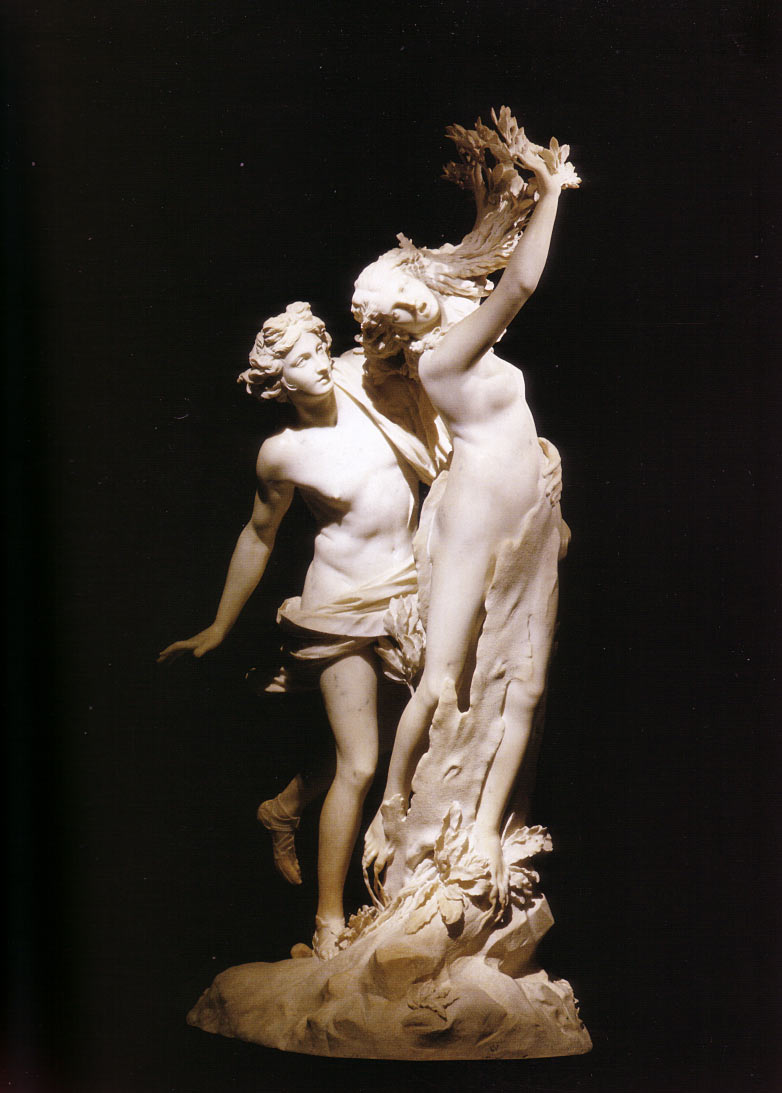Rome, Italy
Apollo & DaphneBy Gian Lorenzo Bernini

The chaste nymph Daphne is being pursued by Greek God Apollo who is infused with lust from one of cupid's arrows. As he grasps Daphne from behind, her only means of escape is to metamorphose into a laurel tree. Already her fingers are sprouting bay leaves and her torso is shrouded with bark. As Ovid's lines report, Apollo's hand, reaching around her middle, can still feel her human heart beating.
Bernini is 24 and the son of a sculptor. When he started work on this piece he was barely out of his apprenticeship to his father. Yet it is an amazing work that completely captures the scene including the look of desperation on Daphne's face. Photos do not do it justice.
Step back a minute. It is 1625. In Spain the Inquisition is still going strong. In Rome the hedonistic Cardinal Borghese has just built an elegant villa with eight large reception rooms. It now needs to be furnished and young Bernini is selected to create several sculptures for the Cardinal. But these are not religious sculptures - far from it, Apollo and Daphne is the recreation of a pagan myth; the abduction of Daphne by the God Apollo. This lusty statue could potentially cause the Cardinal some problems if he were to fall out of favor with the papacy, so the solution was to have it 'sanctified' by the addition of a moralizing couplet carved on the base;
"Those who love to pursue fleeting forms of pleasure, in the end find only leaves and bitter berries in their hands."
Composed by Cardinal Barberini (later Pope Urban VIII).
I am pretty sure that wasn't what was on Cardinal Borghese's mind when he admired his latest work.

